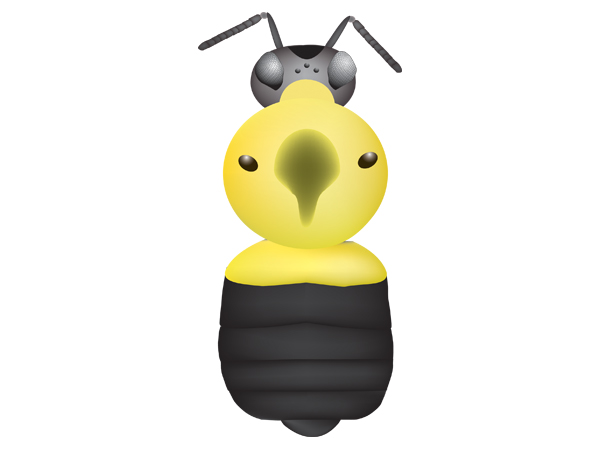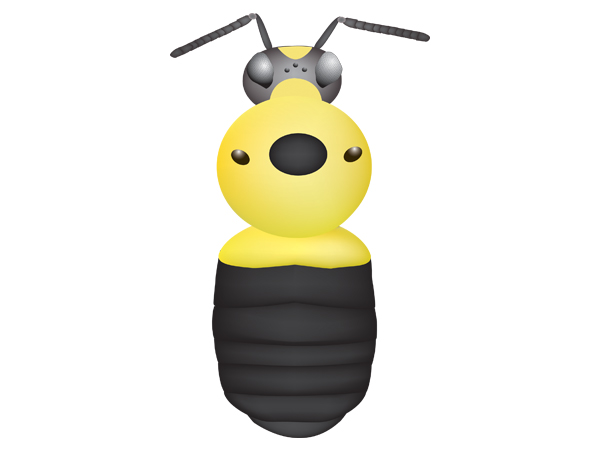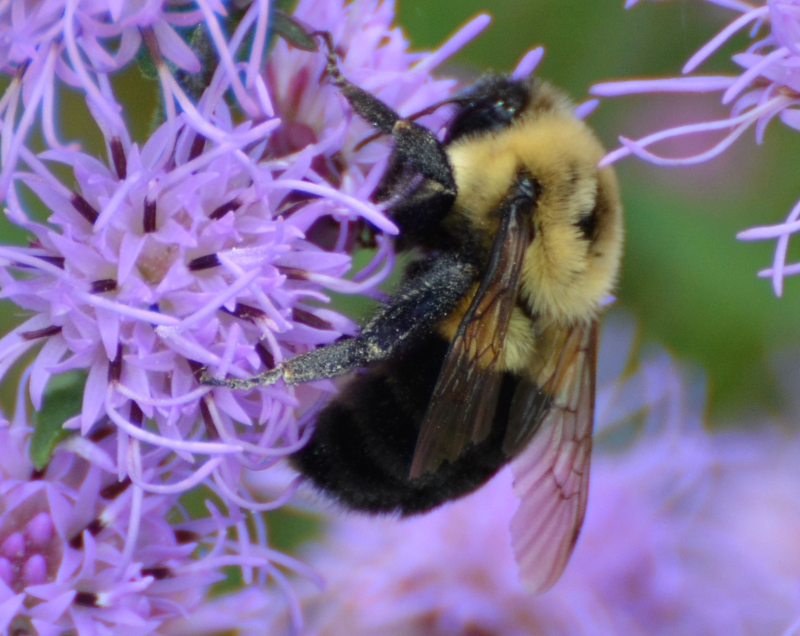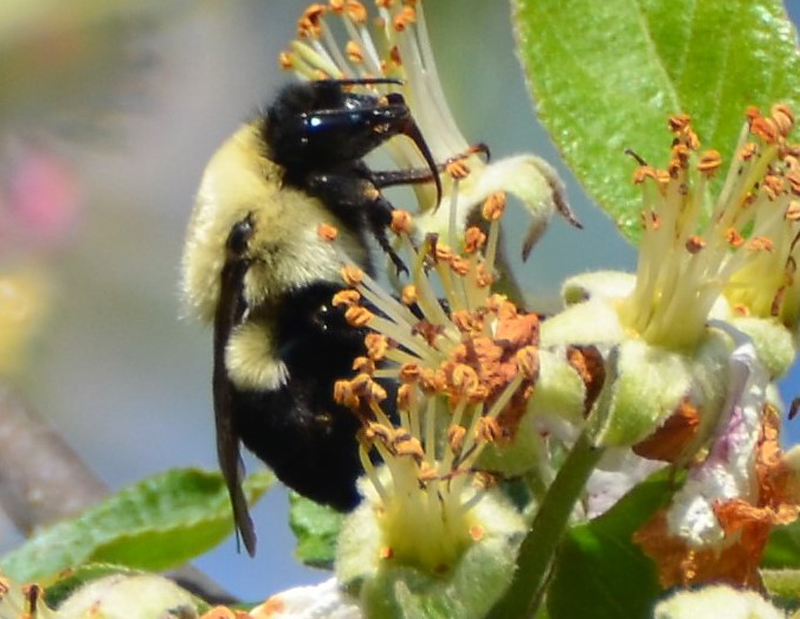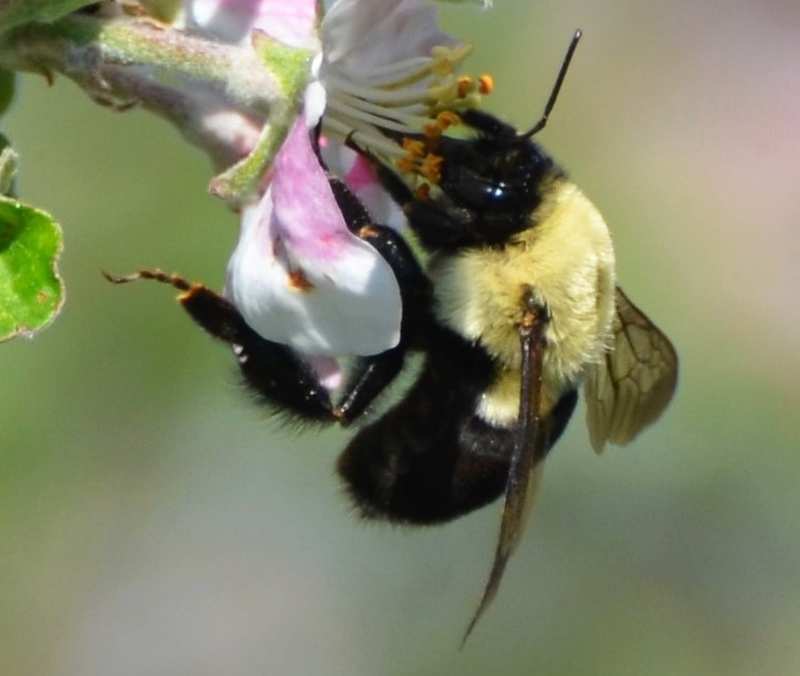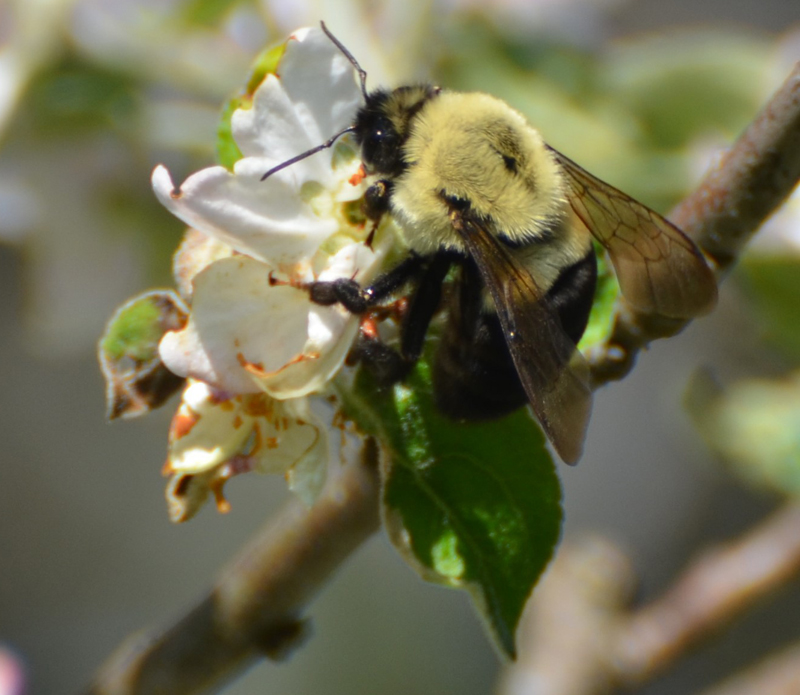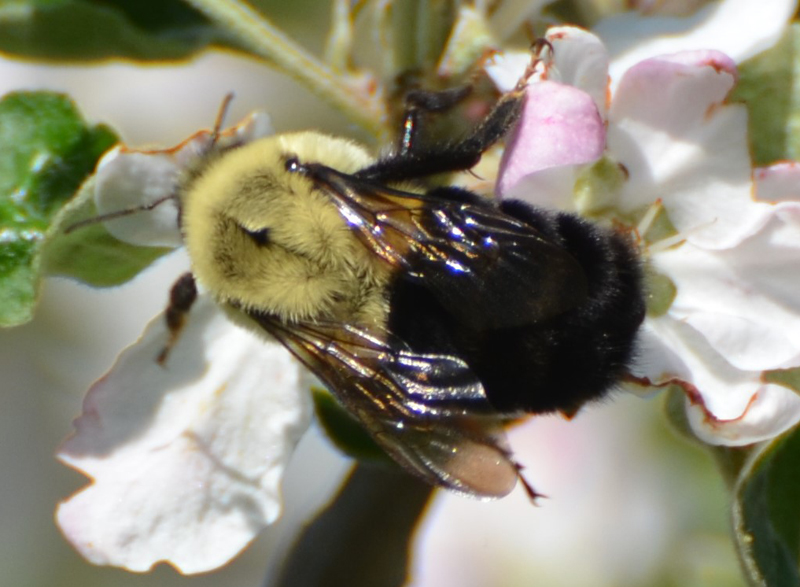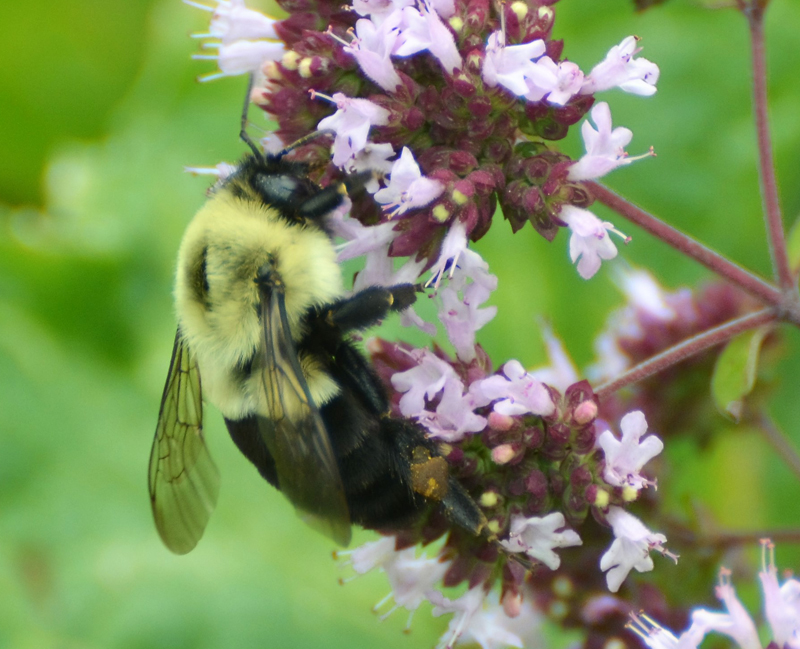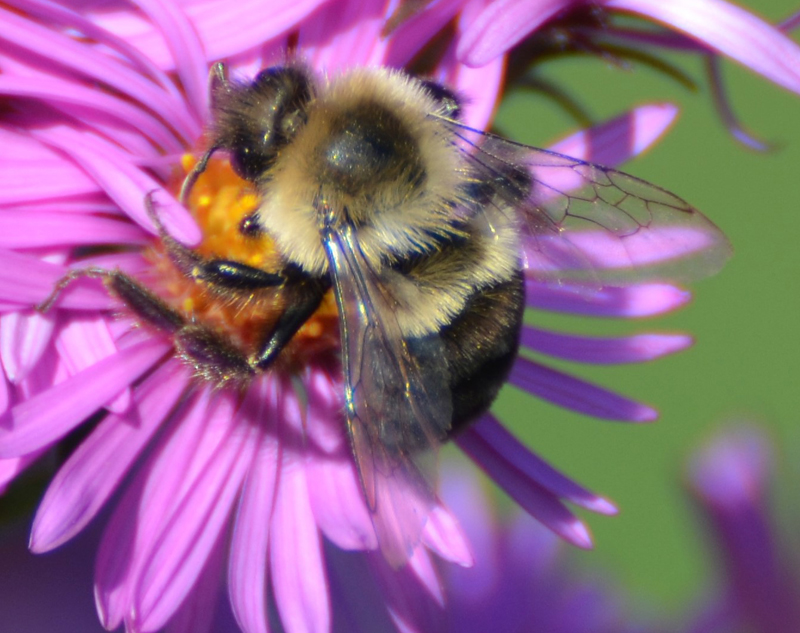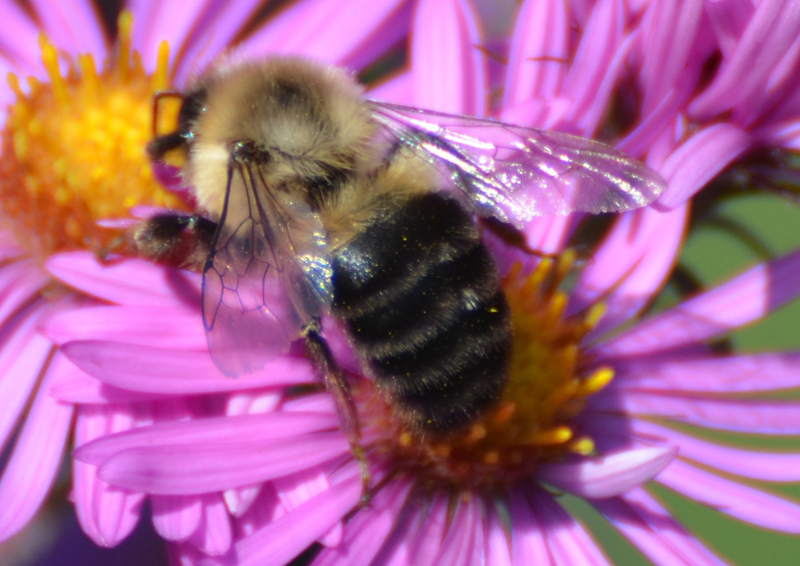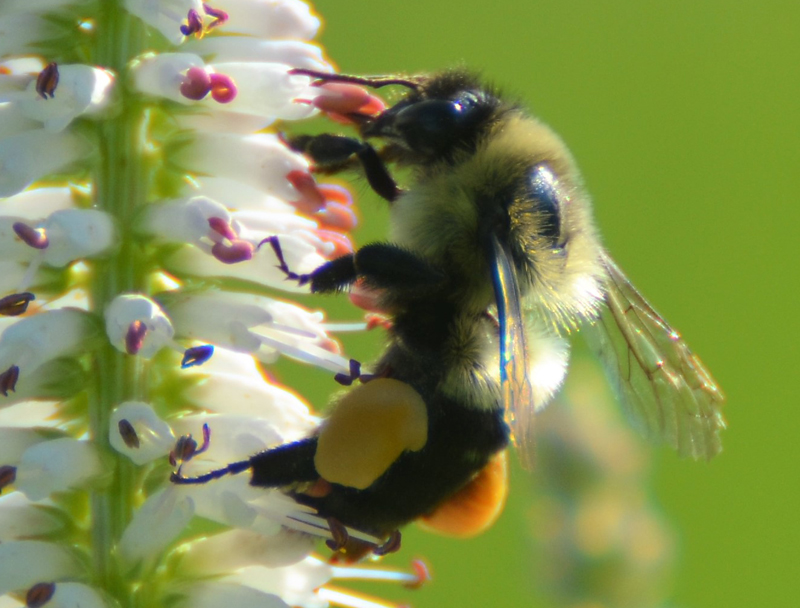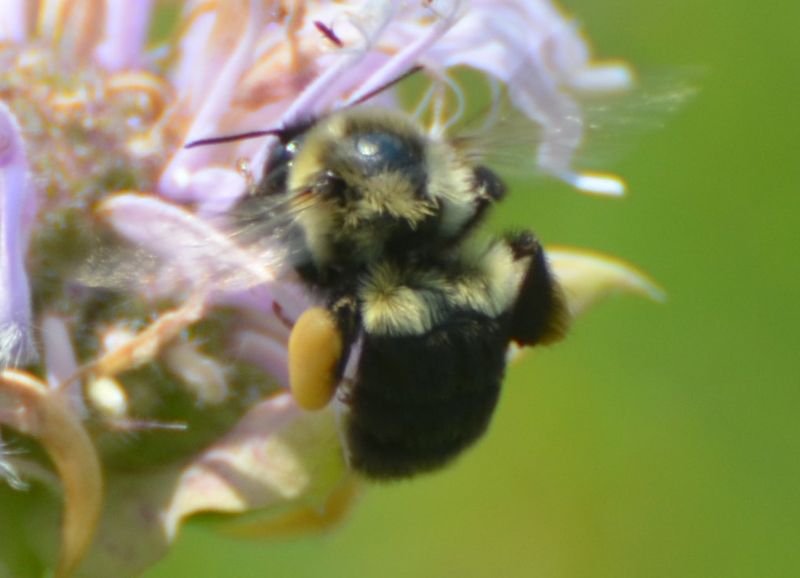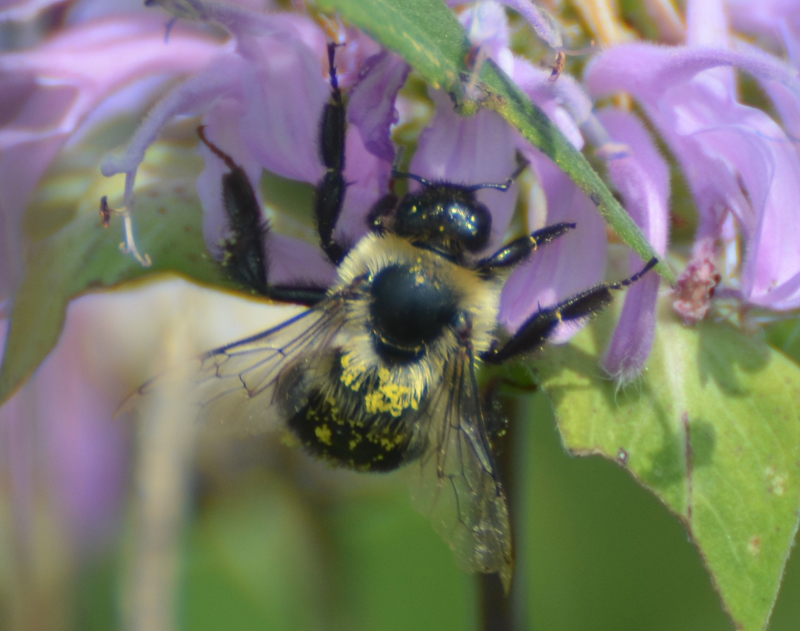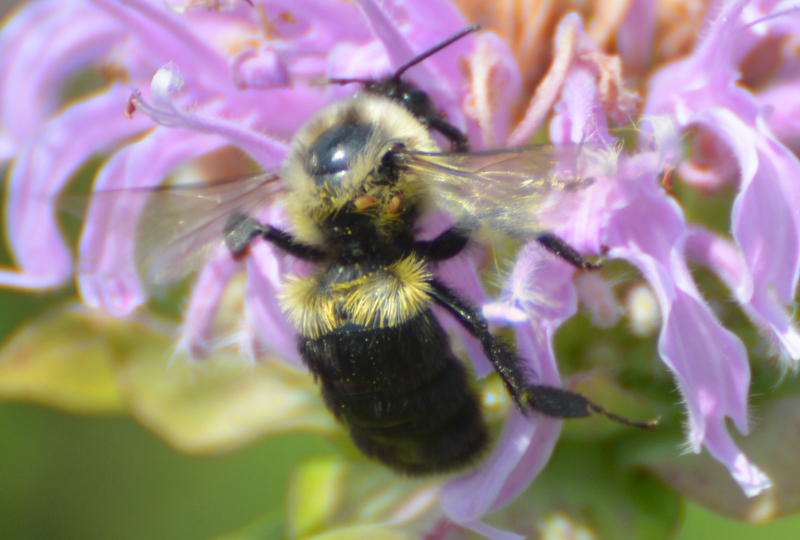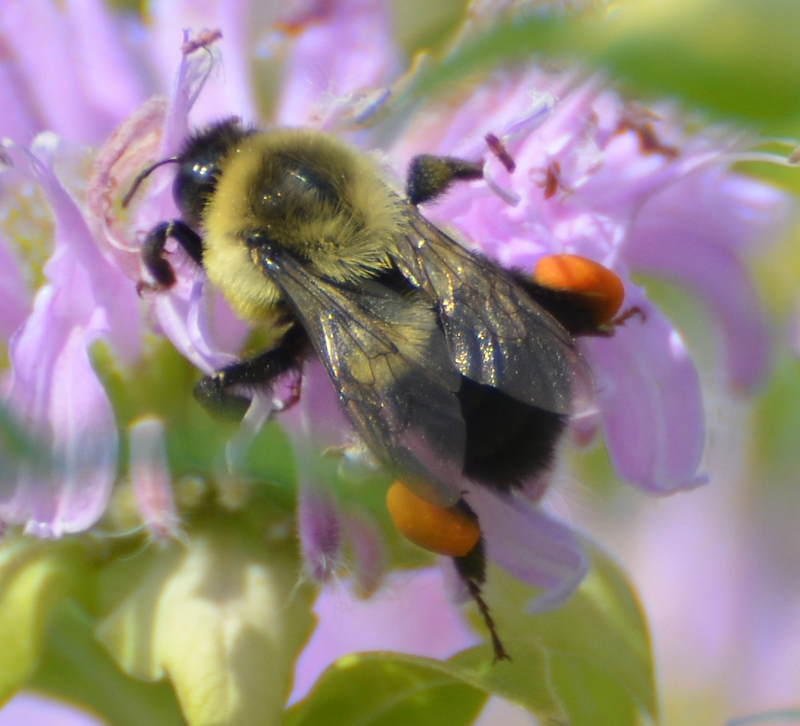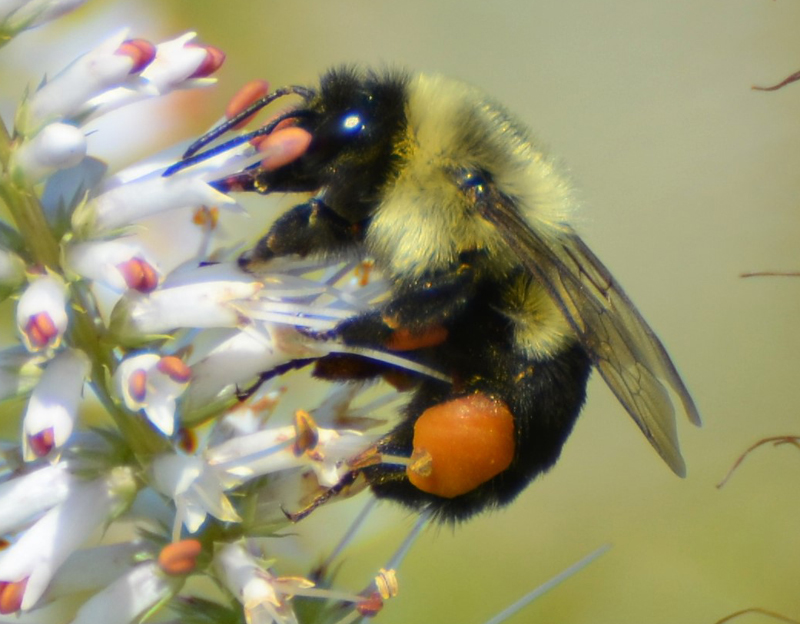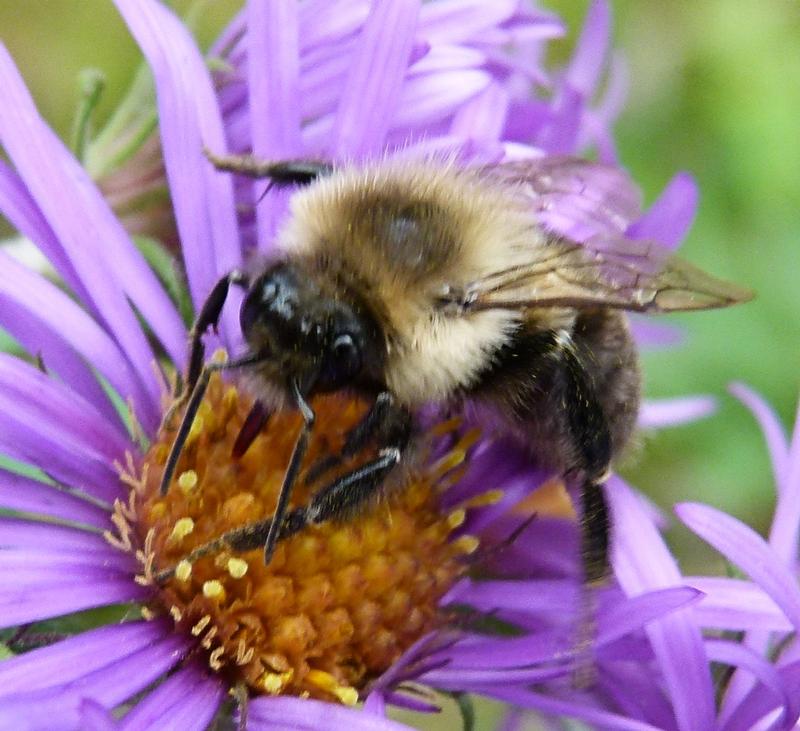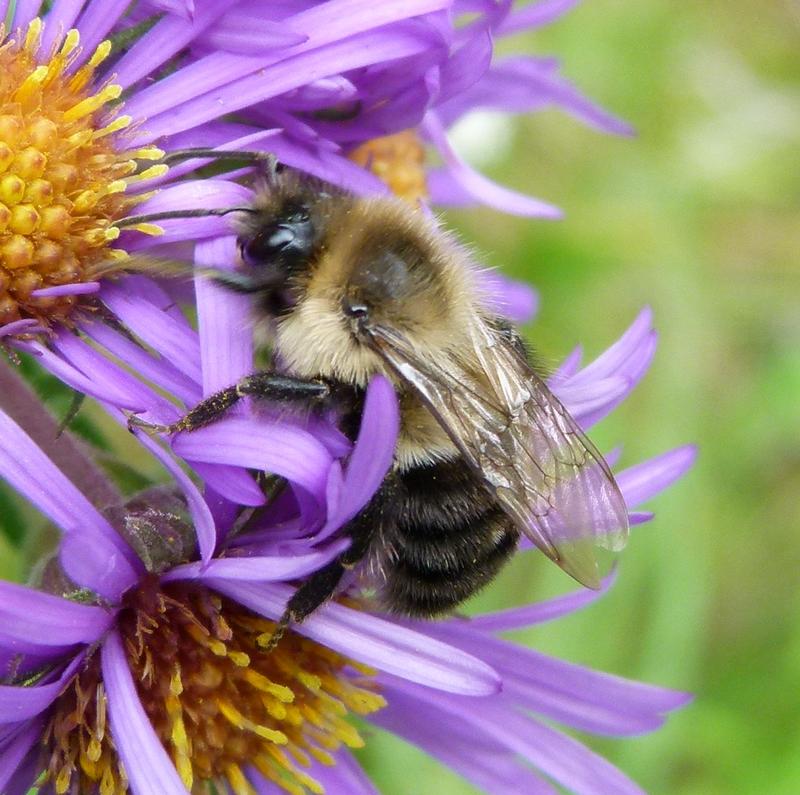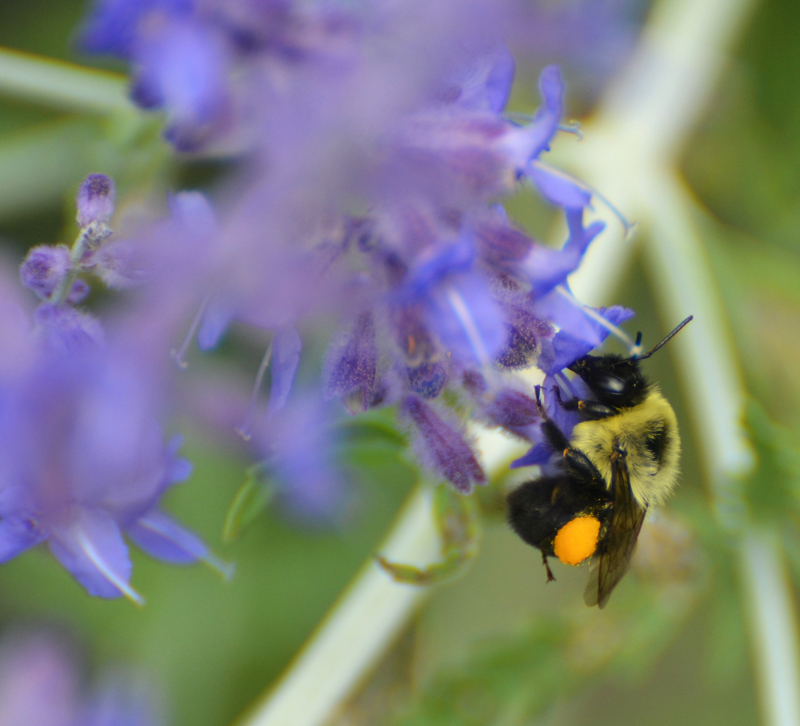
Status-Global/State:
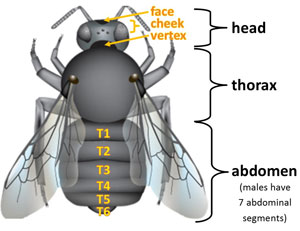
Identification:
- Worker – Face black and vertex yellow. Thorax yellow with faded black spot/patch. Abdominal segment T1 yellow, and T2-5 and T6 black. Very rarely some morphs have some yellow in the front near the center of T2.
- Queen/gyne – Similar to workers, but are larger and appear earlier in the season. Some morphs have a completely yellow thorax, some have yellow in the center of T2, and a rare morph has yellow intermixed on the sides of T4-5.
- Male – Similar to workers except with lighter face.
- Other distinguishing features – Large bee with short and even hair and square cheek/face.
Similar Wisconsin Species:
Similar bumble bee species in Wisconsin are twospotted bumble bee (B. bimaculatus), brownbelted bumble bee (B. griseocollis), confusing bumble bee (B. perplexus), Sanderson's bumble bee (B. sandersoni), and half-black bumble bee (B. vagans) (Colla et al. 2011, Williams et al. 2014).
Description of Habitat/Range:
Found in a variety of habitats across its range including woodland, grassland, farm field, urban parks, wetlands, and gardens (Hatfield et al. 2014, Williams et al. 2014). Nests have been found underground in open fields and woods (Hatfield et al. 2014).
Nectar Plants
The common eastern bumble bee is a medium-tongued species (Williams et al. 2014). Nectar plants include Aster, Cirsium (thistles), Eupatorium (Joe-pye weed), Gelsemium, Impatiens, Malus, Pontederia (pickerel weeds), Rubus (blackberry), Solidago (goldenrods), and Trifolium (clovers) (Williams et al. 2014, Colla et al. 2011).
Data from verified B3 observations [updated 2/28/2024].
Flight Season:
In Wisconsin, observations have been reported between April and October. Range-wide, queens start emerging in April and enter diapause in October (Colla et al. 2011).
Literature Cited:
Colla, S., Richardson, L. and Williams, P. (2011) Bumble Bees of the Eastern United States. A product of the USDA Forest Service and the Pollinator Partnership with funding from the National Fish and Wildlife Foundation.
Hatfield, R., Jepsen, S., Thorp, R., Richardson, L. & Colla, S. 2014. Bombus impatiens. The IUCN Red List of Threatened Species 2014: e.T44937797A69003246.
Williams, P.H., Thorp, R.W., Richardson, L.L. and Colla, S.R. (2014) The Bumble bees of North America: An Identification guide. Princeton University Press, Princeton.
